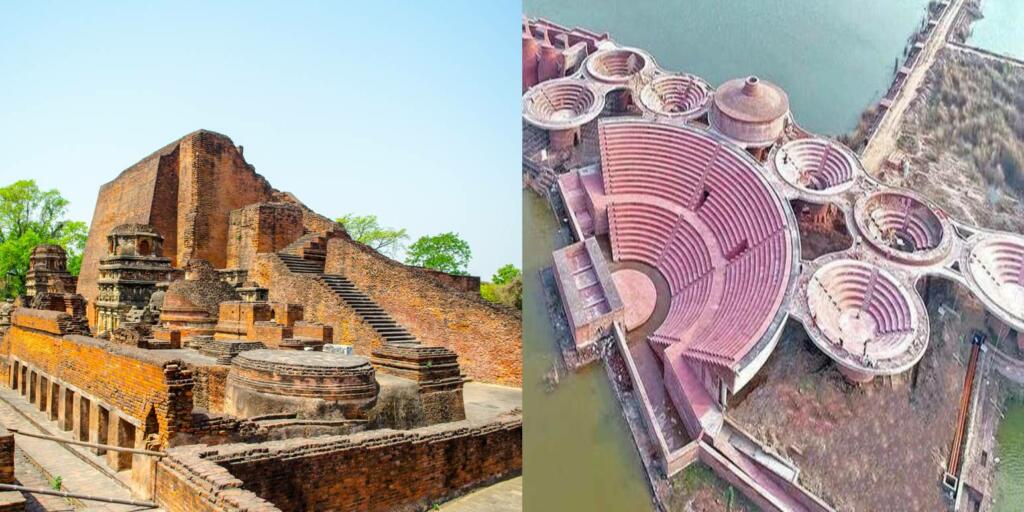For the last 8 years, Indians have been blessed with a nationalistic government at the helm of affairs. The Modi government is ready to match shoulders to shoulders with public in order to revive cultural heritage in the country. But, colonialism seems to have made a deep impact on the psyche of locals as well. In the name of development, people are unintentionally or may even intentionally exploiting the site of Nalanda University.
Purity of Nalanda University in danger
Association of Buddhist Tour Operations (ABTO) has requested the Bihar government to initiate efforts towards protecting the purity of the Nalanda University site. Unauthorized digging by local mafias is reportedly destroying antiquities and archaeological evidence of ancient infrastructures. According to the letter sent by ABTO, the organization urged that if not discontinued, these illegal activities have the potential of killing tourism in the region. The situation is so grave that the letter has been forwarded to the state tourism board, the ministry of tourism, and the Archaeological Survey of India (ASI), Patna Circle as well.
Kaulesh Kumar, the ABTO general secretary informed that even government-approved digging is also causing harm to the site. Apprising how locals are cognisant about the preservation, but authorities are not, Kaulesh said, “The matter came to light a few days ago when people of Mohanpur village which is located close to the Nalanda University ruins, found the remains of images in the debris thrown away from the digging site. They collected these images at a temple and started worshipping them but other antiquities were completely destroyed by the JCB machine used at the digging site,…”
Nalanda University is a global one
The revival of Nalanda University is one of the most ambitious goals of people owing allegiance to the Sanatan Sabhyata, which are in majority. Late President APJ Abdul Kalam was the first one who mooted the idea in 2005/06. He first discussed it with Nitish Kumar. At the 2007 East Asia Summit, India finally pitched the project for international collaboration.
Owing to the fact that, Nalanda was a global university well before the establishment of modern ones like Cambridge, Oxford, and IVY league among others, countries like Singapore, China, Thailand, and Japan jumped in to assist.
Thailand contributed 1 lakh Dollars while Japan offered to modernize road infrastructure around the campus. China also wants a special floor for itself in the library and has contributed $1 million for the purpose. Indian government sanctioned 2700 crore for the project.
Construction of Nalanda University is complete
On September 1, 2014, Prime Minister Modi unveiled a grand project- restoring the ancient Nalanda University to its great glory. The University’s proposed curriculum includes subjects such as humanities, economics, Asian integration studies, and sustainable development. A 500 members staff will be coordinating for efficient management of the University whose campus is spread over 455 acres.
It has been constructed with a high degree of sophistication and with due regard to the weather conditions of the region. The construction and design will keep the campus warm in the winter months, and cool in the summer months. Also, it will have many beautiful lakes creating a scenic view in which the campus will seem surrounded by water from all sides.
Excavation findings should be used in Nalanda University
Ideally, the University and its architecture should have been reflecting the past and present of the civilization, while its curriculum should have been giving detailed elaboration of the structure. In fact, if you look at the structure being built, the architecture does reflect its glorious past. However, just like any other government project, it is only from the periphery.
To truly reflect the past, the architecture needs to use excavated stones and other antique findings from the area. If it is reusable, it needs to be used as stones or other objects beautifying the building. If not, then it needs to be preserved in the library, classes, museums, or other places inside the campus where students could visit and learn.
Ideally, the Bihar government preserving them is also a viable solution. But, destruction or possible black marketing of products excavated from World Heritage sites is not acceptable. That too from Nalanda, it is a strict NOOO.
Support TFI:
Support us to strengthen the ‘Right’ ideology of cultural nationalism by purchasing the best quality garments from TFI-STORE.COM
